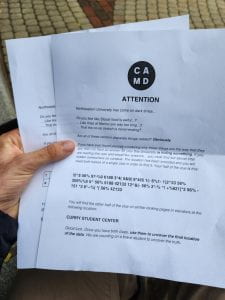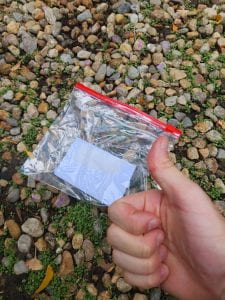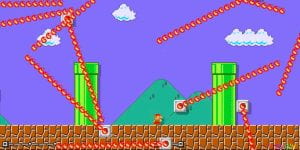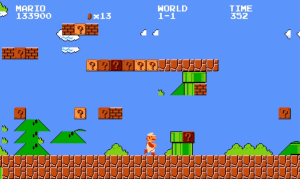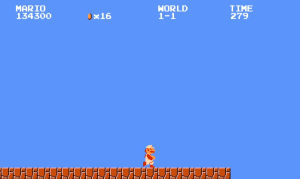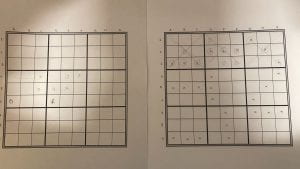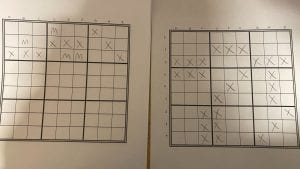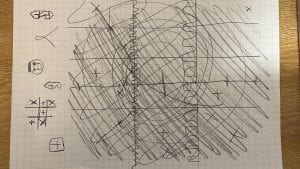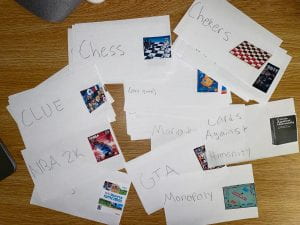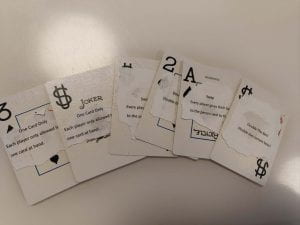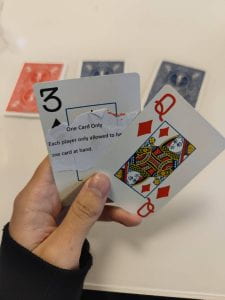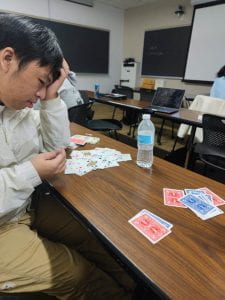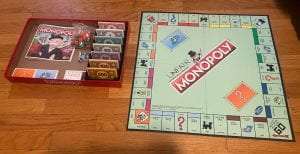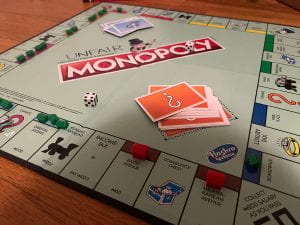Title: Thoughtless Objectives
Inspiration:
- Watching the video that Jen and Derek put on with the man deciding what the woman should do and what decisions they should make
- Then thought about how I write stuff and how others influence my decisions when I’m writing
Supplies:
- Notebook/Journal (preferably on the cheaper side)
- A pencil or pen
Setup:
- There will be one person with a notebook(the notetaker)
- Next, there is at least 1 person (a person) who will get the notebook and decide what they want to change in it (They can either overwrite, erase, nothing, or be creative).
- There will be a neutral judge that will decide whether the objective is complete or if the objective is possible
Before Playtest:
Gameplay:
- The notetaker will write down what they want for two minutes while the person tries to influence their decision (by talking, moving, or anything besides physical interaction)
- The notetaker’s goal is to write/draw something that is beneficial for them. Without letting, the person’s influence get to them
- When the person gets the notebook, they have 30 seconds to do whatever they want to the notebook. (obviously not destroy the notebook or make it unusable)
- The person’s goal is to either have the notetaker actively write down their influences when they are writing or make the notetaker give up.
- There is no end unless the person’s goal is fulfilled or the person gives up
After Playtest:
Gameplay:
- The person will give the notetaker an objective (it has to be something that can be written down into the journal and feasible in 2 min)
- The notetaker has two minutes to achieve the objective (while the person tries to influence, distract etc)
- If the judge decides the notetaker completed their objective then they get 1 point and the roles switch (players can choose who they want to be)
- If the judge decides the notetaker did not complete the objective then the person has 30 seconds to mess up whatever the notetaker wrote (they can not make the notebook unusable up to judge’s decision)
- The person gets a point if the notetaker gives up
- The first to whatever how many points wins!
Objective based-goals:
write/draw everything on a gudetama poster
Write down page 132 of the book in its entirety
Write the exact number of candies that are in that pile on the floor, as the pile exists right now, without removing any candies
Write down 120 words, each of character length greater than 3, and each word has to be unique. Shorthand is not permissible, and the 120 words refers not to “120 words” but rather to the action of writing down all 120 words.
Write down the hex color code of this blanket
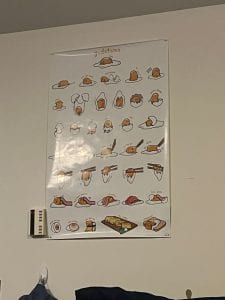
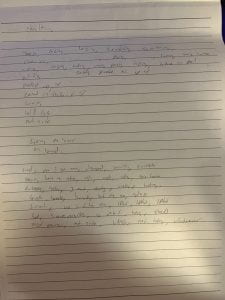
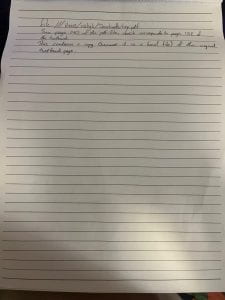
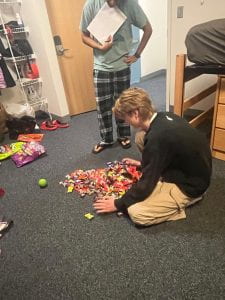
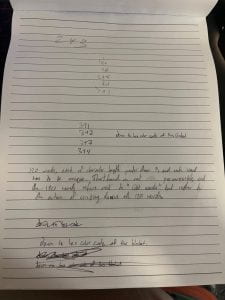
Artist statement:
The original meaning of the artwork was to mock the simple task of writing a schedule, detailing a plan of action, doodling etc by showing the power random people have seemingly over us and changing/influencing what we want even though it’s our journal. I’m exaggerating my critique on how our minds seemingly function, and questioning why we let people dictate our actions. But as the playtest went on, the meaning of the game changed. It became more of critiquing unrealistic tasks that we are given on a daily basis. Everything from school to home life, it’s all a crumpled mess because doing it all seems impossible. We work so hard to reach a goal only for our work to be rendered useless or something comes up that delays us from accomplishing that goal. The new version of “Thoughtless Objectives” is supposed to be representative of this feeling. Being the notetaker, you are under an immense time crunch, trying your hardest to finish the task while the person is actively trying to sabotage you. The person only wins by making the notetaker give up; this was intentional in order to hit home the idea that there is no real reason for making things difficult for a person besides satisfaction in a person’s misery. Although the task given is supposed to be possible, the person can dance on the line between extremely difficult and impossible. As I witnessed in my playtests, I had a person tell the notetaker to count all the candy on the floor (being over 400 candies). While the notetaker did attempt it, they ultimately failed. On a personal level, there are times where I feel like everything is just conveniently against me. With every mistake I make or extra time I take, the dumber I feel amongst my peers. The more I feel this way the more I listen to others rather than myself. Even with this project, I feel like the real intervening was the playtesters’ feedback vs my original idea.

